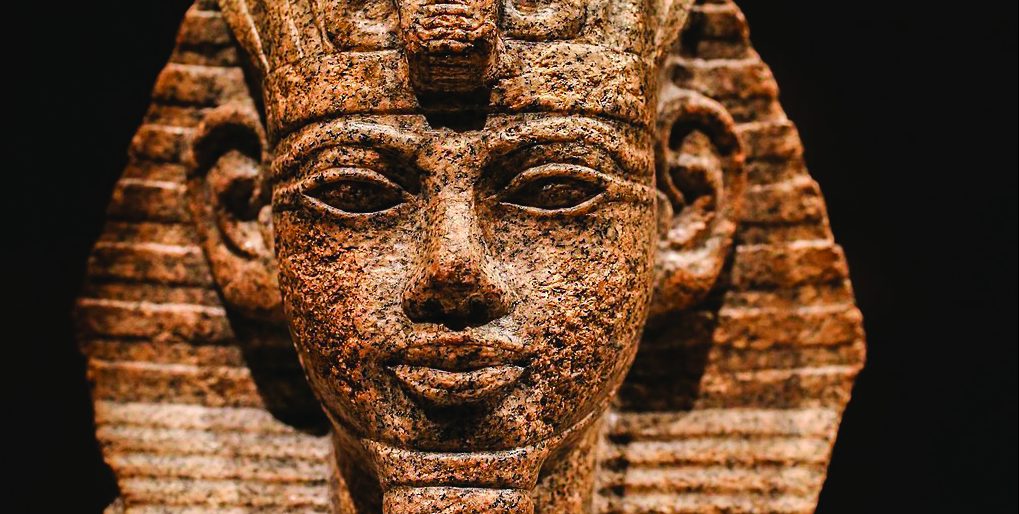Black History
Amenhotep III: A Peaceful Reign in Ancient Egypt
Amenhotep suffered from severe dental problems, arthritis, and possibly obesity in his later years. After ruling Egypt for 38 years, he died in 1353 BCE.

Tuthmosis IV left his son an empire of immense size, wealth, and power: the 18th Dynasty of Egypt.
At 12 years old, Amenhotep III (c. 1386–1353 BCE) came to the throne and married Tiye in a royal ceremony. Tiye, who was among several of Amenhotep’s wives, would bear seven children. However, immediately after the marriage she became the one—the great royal wife, an honor that her own mother-in-law never held. Tiye could then outrank her in courtly matters.
Although Amenhotep and Tiye were by today’s standards still in their youth, Egypt’s wealthy and powerful often ruled at an early age. According to Egyptologist Zahi Hawass, “Amenhotep III was born into a world where Egypt reigned supreme. Its coffers were filled with gold, and its vassals bowed down before the mighty rulers of the Two Lands [Egypt].”
After his marriage to Tiye, Amenhotep continued his father’s work in implementing new building programs throughout Egypt. During his reign, he ordered the construction of more than 250 buildings, temples, and stone slabs erected as monuments. All were immense in size and boasted intricate details. Today, the statues known as the Colossi of Memnon, are all that is left of Amenhotep III’s mortuary temple. According to historians, Amenhotep envisioned an “Egypt so splendid that it would leave one in awe.”
A master of diplomacy, Amenhotep placed surrounding nations in his debt by giving them gold. Doing so encouraged loyalty and made them followers. These relationships soon grew profitable and his generosity to friendly kings became well established.
Amenhotep was known for his hunting skills which were noted in inscriptions: “the total number of lions killed by His Majesty with his own arrows, from the first to the tenth year [of his reign] was 102 wild lions.” He was also an adept military leader. Some historians say that he “probably fought, or directed his military commanders, in one campaign in Nubia and he had inscriptions made to commemorate that expedition.”
Many foreign rulers wanted Amenhotep to provide them Egyptian wives. Respecting the women of his land, he swore that “no daughter of Egypt had ever been sent to a foreign land and would not be sent under his reign.”
Amenhotep was also humble in his practice of the ancient Egyptian religion, which proved to be the foundation for his interest in the arts as well as construction. His greatest contribution to Egyptian culture was his ability to maintain peace and prosperity, which enabled him to devote his time to the arts.
Amenhotep suffered from severe dental problems, arthritis, and possibly obesity in his later years. After ruling Egypt for 38 years, he died in 1353 BCE.
Letters penned by foreign rulers expressed their grief and condolences to Queen Tiye. The letters confirmed that these monarchs hoped to continue the same good relations with Egypt under the new king as they had with Amenhotep III. With Amenhotep’s passing, his son, then called Amenhotep IV, began his reign.
Activism
Oakland Post: Week of April 24 – 30, 2024
The printed Weekly Edition of the Oakland Post: Week of April 24 – 30, 2024

To enlarge your view of this issue, use the slider, magnifying glass icon or full page icon in the lower right corner of the browser window. ![]()
Activism
Oakland Post: Week of April 17 – 23, 2024
The printed Weekly Edition of the Oakland Post: Week of April 17 – 23, 2024

To enlarge your view of this issue, use the slider, magnifying glass icon or full page icon in the lower right corner of the browser window. ![]()
Black History
Matthew Henson: Explorer Extraordinaire
Matthew Henson, a trailblazing explorer who overcame countless obstacles to leave an incredible mark on history. Born on August 8, 1866, in Charles County, Maryland, his journey is a testament to the power of determination and the spirit of adventure.

By Tamara Shiloh
Matthew Henson, a trailblazing explorer who overcame countless obstacles to leave an incredible mark on history. Born on August 8, 1866, in Charles County, Maryland, his journey is a testament to the power of determination and the spirit of adventure.
Henson’s life began amidst the backdrop of post-Civil War America, where opportunities for African Americans were scarce. From a young age, he possessed an insatiable curiosity about the world beyond his small town. At the age of 12, he embarked on a journey that would change the course of his life forever when he joined a merchant ship as a cabin boy.
His most famous expedition was his journey to the Arctic with renowned explorer Robert E. Peary. In 1887, Henson joined Peary’s crew as a seaman and quickly proved himself to be invaluable with his skills as a navigator and craftsman. Over the course of several expeditions, Matthew endured extreme cold, treacherous terrain, and grueling conditions as he and Peary sought to reach the elusive North Pole.
In 1908–09, Peary set out on his eighth attempt to reach the North Pole. It was a big expedition, with Peary planning to leave supplies along the way. When he and Henson boarded their ship, the Roosevelt, leaving Greenland on August 18, 1909, they were joined by a large group. This included 22 Inuit men, 17 Inuit women, 10 children, 246 dogs, 70 tons of whale meat, blubber from 50 walruses, hunting gear, and tons of coal.
In February, Henson and Peary left their anchored ship at Ellesmere Island’s Cape Sheridan, along with the Inuit men and 130 dogs. They worked together to set up a trail and supplies along the way to the Pole.
Peary picked Henson and four Inuit people to join him in the final push to the Pole. However, before they reached their destination, Peary couldn’t walk anymore and had to ride in a dog sled. He sent Henson ahead to scout the way. In a later interview with a newspaper, Henson recalled being in the lead and realizing they had gone too far. The group turned back, and Henson noticed his footprints helped guide them to their destination. At that location, Henson planted the American flag.
Henson’s legacy extends far beyond his expeditions to the Arctic. He shattered racial barriers in the world of exploration and inspired countless individuals, regardless of race, to dream big and pursue their passions. In 1937, he was finally recognized for his achievements when he was inducted into The Explorers Club, an organization dedicated to promoting scientific exploration and field research.
Matthew Henson died in the Bronx, New York, on March 9, 1955, at the age of 88.
-

 Community2 weeks ago
Community2 weeks agoFinancial Assistance Bill for Descendants of Enslaved Persons to Help Them Purchase, Own, or Maintain a Home
-

 Activism3 weeks ago
Activism3 weeks agoOakland Post: Week of April 3 – 6, 2024
-

 Business2 weeks ago
Business2 weeks agoV.P. Kamala Harris: Americans With Criminal Records Will Soon Be Eligible for SBA Loans
-

 Community2 weeks ago
Community2 weeks agoAG Bonta Says Oakland School Leaders Should Comply with State Laws to Avoid ‘Disparate Harm’ When Closing or Merging Schools
-

 Activism2 weeks ago
Activism2 weeks agoOakland Post: Week of April 10 – 16, 2024
-

 Community1 week ago
Community1 week agoOakland WNBA Player to be Inducted Into Hall of Fame
-

 Community1 week ago
Community1 week agoRichmond Nonprofit Helps Ex-Felons Get Back on Their Feet
-

 City Government2 weeks ago
City Government2 weeks agoLAO Releases Report on Racial and Ethnic Disparities in California Child Welfare System




















































